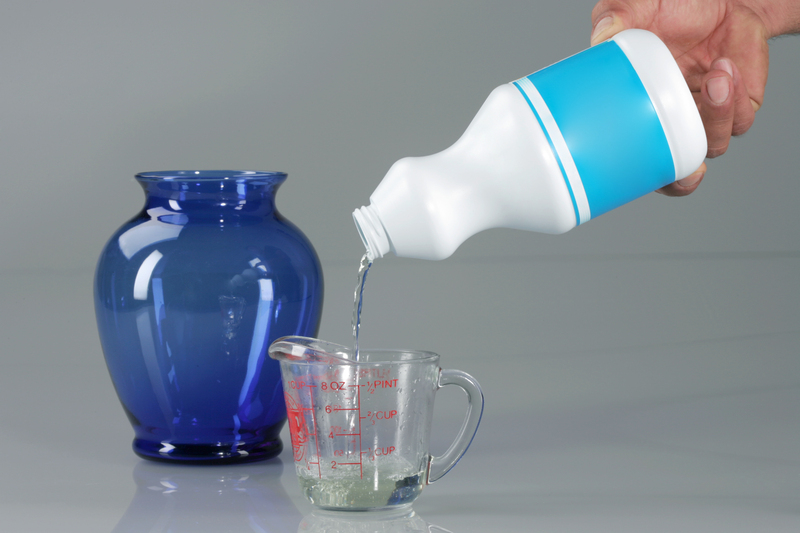Learn How to Eradicate Unpleasant Damp Odors
Posted on 07/06/2025
Learn How to Eradicate Unpleasant Damp Odors: A Comprehensive Guide
Unpleasant damp odors can make any living space feel uncomfortable and unwelcoming. Whether it's a musty smell lingering in your basement or a persistent damp scent in your bathroom, finding effective ways to eradicate these odors is crucial for maintaining a fresh, healthy home. In this comprehensive guide, you will discover the causes of damp smells, the best methods to eliminate them, and essential tips for preventing their return. Let's delve deep into how to remove damp odors and reclaim your indoor air quality!

Understanding the Origins of Damp Odors
Before you can truly eliminate damp odors, it's essential to understand what causes them. Dampness typically results from excessive moisture accumulation, poor ventilation, or water leaks. The lingering musty smells are usually due to mold and mildew growth--both thrive in environments where water persists.
Common Sources of Damp Odors
- Basements: Lower levels of a home tend to have less airflow and are more susceptible to moisture.
- Bathrooms: Hot showers and poor ventilation can lead to persistent damp problems.
- Laundry rooms: Washing machines and water pipes can introduce humidity if not well-maintained.
- Kitchens: Leaky sinks or poorly sealed dishwashers are common culprits.
- Attics: Roof leaks and insulation issues can trap moisture and cause musty smells.
- Carpets and upholstery: Liquid spills that aren't dried promptly can foster mold growth and odors.
Key takeaway: The first step in removing damp odors is identifying their root cause. Without solving the underlying issue, the unpleasant smell will likely return.
How Damp and Mold Affect Your Health
_Dampness and musty odors aren't just an inconvenience--they can have a serious impact on your well-being._ Prolonged exposure to mold and mildew can lead to:
- Respiratory issues such as coughing, sneezing, and throat irritation.
- Allergic reactions: Skin rashes, watery eyes, and sinus congestion.
- Asthma flare-ups, especially in sensitive individuals.
- Aggravation of existing conditions (e.g., chronic bronchitis).
Ensuring your home is free from damp odors is not only about comfort--it's about safeguarding your health.
Proven Methods to Remove Damp Odors from Your Home
Effectively eradicating musty damp smells involves a multi-step approach: eliminating the cause, treating the odor, and ensuring long-term prevention. Here are the most effective strategies for a fresher, cleaner indoor environment:
Step 1: Identify and Eliminate the Moisture Source
- Inspect for leaks: Carefully check plumbing under sinks, behind appliances, and in the basement. Fix all visible leaks immediately.
- Examine roofs and windows: Look for signs of water intrusion or condensation buildup, especially after heavy rain.
- Check ventilation systems: Ensure fans in kitchens, bathrooms, and laundry rooms are functional and vented outside.
_Before tackling the odor, address the source. Otherwise, cleaning will only provide temporary relief._
Step 2: Improve Air Circulation
- Open windows and doors: Air out as often as possible to remove moist, stale air.
- Use exhaust fans: Run fans in bathrooms and kitchens during and after use.
- Install dehumidifiers: In high-humidity areas, a dehumidifier can drastically reduce moisture and prevent mold growth.
- Move furniture away from walls: This allows air to circulate freely, preventing the buildup of condensation and mildew behind large pieces.
Step 3: Deep Clean and Disinfect
- Launder fabrics: Wash curtains, cushion covers, and removable upholstery with hot water. Use a cup of vinegar to neutralize odors.
- Clean hard surfaces: Scrub tiles, floors, and walls with a solution of water, vinegar, and baking soda. These natural cleaners combat both mold and smell.
- Steam clean carpets: Professional-grade steam cleaning can remove deeply embedded moisture, mold, and odors.
- Wash windows and frames: Mold tends to collect on window sills and frames. Clean thoroughly with an anti-mold cleaner.
Step 4: Use Odor Absorbers and Fresheners
Once the source is resolved, neutralize any lingering odors with these time-tested methods:
- Baking soda: Sprinkle on carpets and leave overnight before vacuuming up. It absorbs moisture and odors.
- Activated charcoal: Place bowls in affected rooms. Charcoal naturally draws in and traps airborne odor molecules.
- Vinegar: Set out bowls of undiluted white vinegar; its acetic acid neutralizes stubborn musty smells.
- Coffee grounds: An effective natural deodorizer that leaves a subtle scent behind.
- Commercial odor absorbers: These products use advanced absorbent materials that target and remove bad smells at the source.
*Tip: Avoid simply masking the odor with air fresheners--always pair these techniques with proper moisture control.*
Step 5: Remove and Replace Damaged Materials
- In severe cases, you may need to replace water-damaged drywall, insulation, or tiles.
- Discard moldy carpets or rugs that can't be salvaged after professional cleaning.
- Consider repainting walls with mold-resistant paint after thoroughly drying and treating affected areas.
Prevention: Keep Musty and Damp Odors Away for Good
Once you've taken steps to eliminate damp smells from your home, focus on prevention to ensure these odors don't return. Here's how:
Essential Preventive Measures
- Maintain low indoor humidity: Aim for humidity levels between 30-50% using a hygrometer.
- Clean gutters and downspouts: Blocked drains can direct water toward your home's foundation, increasing moisture risk.
- Seal basement walls and floors: Consider waterproof paints and sealants for extra protection in damp-prone areas.
- Schedule regular plumbing inspections: Detect small leaks before they become major problems.
- Allow wet items to dry thoroughly: Hang towels, bath mats, and laundry in well-ventilated spaces.
- Regularly deep-clean carpets and upholstery: Don't allow spills and pet accidents to linger and attract mold.
The Role of House Plants
- Some houseplants like Bamboo Palm and English Ivy help improve air quality by absorbing moisture and toxins.
- Avoid overwatering, which can introduce additional humidity and promote mold growth.
Avoid Common Mistakes
- Never block air vents or stow damp items in confined spaces.
- Avoid overusing chemical air fresheners; they may contribute to poor indoor air quality over time.
DIY Solutions and Natural Remedies for Damp Odor Removal
Natural products are both affordable and effective when you need to remove musty damp odors safely. Here are some easy recipes and practical applications you can try:
Homemade Deodorizer Spray
- Combine 1 cup of white vinegar, 1 cup of water, and 10 drops of tea tree or lavender oil in a spray bottle.
- Spritz on affected surfaces, letting it air dry. These essential oils have antimicrobial properties, while vinegar eliminates odor at its source.
DIY Air Purifying Sachets
- Fill small fabric bags with a mix of dried lavender, activated charcoal, and baking soda.
- Place them inside drawers, closets or shoes to absorb unwanted moisture and musty scent.
Lemon and Salt Scrub for Tiles and Grout
- Mix lemon juice and coarse salt into a paste.
- Apply to affected areas, scrub gently, and rinse. The acidity of lemon helps break down mildew, while salt acts as an abrasive cleaner.

When to Call in a Professional
While many musty and damp odors respond well to DIY techniques, sometimes the underlying problem is too extensive or hazardous. If you notice any of the following, consult an expert:
- Large visible patches of mold (>10 square feet).
- Persistent odors despite all cleaning efforts.
- Evidence of ongoing water leaks inside walls or foundations.
- Unexplained respiratory symptoms among family members.
*Professionals can conduct thorough inspections, recommend structural repairs, and safely remove hazardous mold.*
Summary: Freshen Up Your Home by Eradicating Damp Smells Once and For All
Unpleasant damp odors have no place in a healthy, inviting home. By following the detailed steps outlined above--identifying the source, improving ventilation, deep-cleaning affected areas, and implementing proactive prevention--you can enjoy the benefits of fresh, clean air and a more pleasant living environment.
Remember: Persistent dampness and musty smells should never be ignored. Not only can they damage your home and belongings, but they can also negatively impact your health. With a combination of targeted cleaning strategies and consistent home maintenance, you can eliminate musty odors and prevent their return, ensuring your home stays inviting year-round.
_Use this guide as your blueprint for tackling damp odors, and breathe easier knowing your efforts will pay off in safer, fresher indoor air!_
- Inspect for leaks regularly
- Promote good airflow
- Deep clean and deodorize
- Use natural and commercial odor absorbers
- Maintain proper humidity levels
By staying vigilant, you can confidently eradicate unpleasant damp odors from your home for good!





